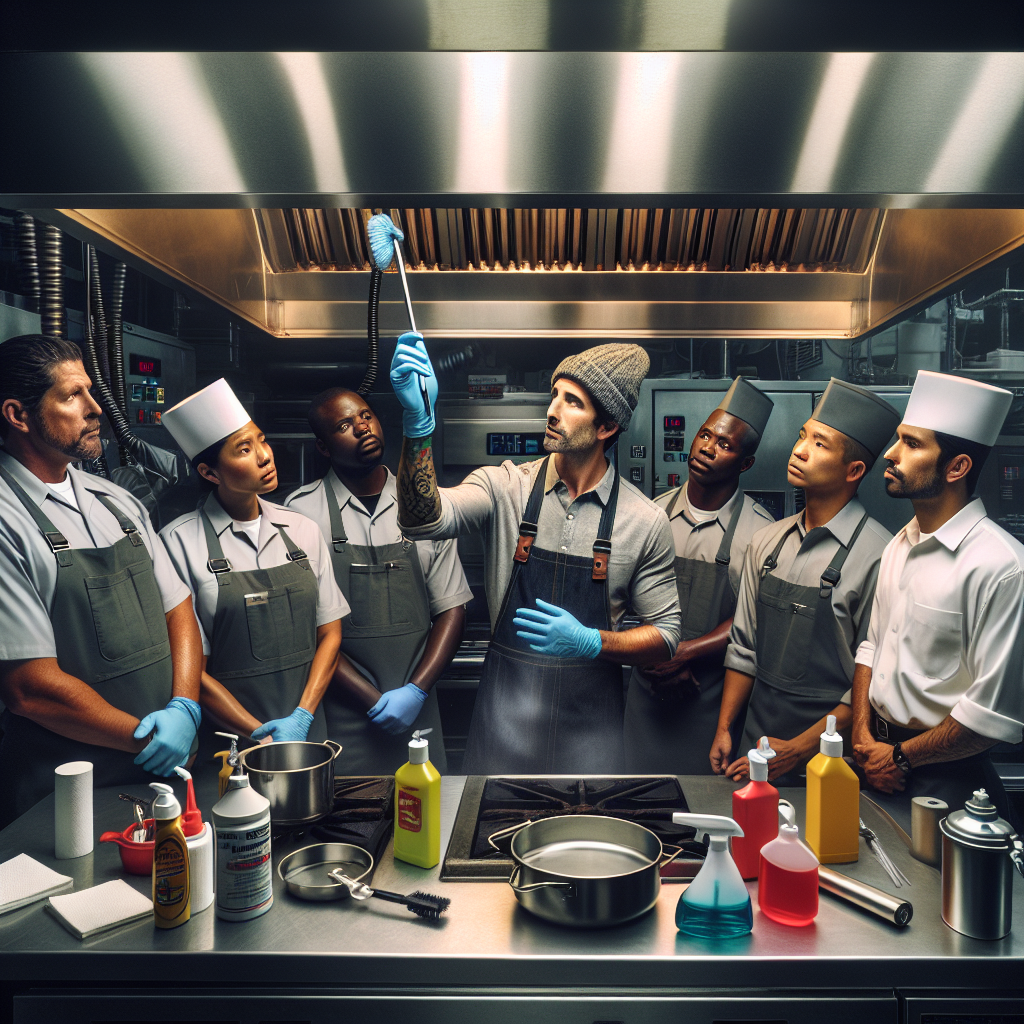Master Effective Hood Cleaning with Proper Employee Training
Understanding the Crucial Role of Hood Cleaning in Commercial Kitchens
In the bustling world of culinary delights, impeccable hygiene is not just a necessity but a cornerstone of success. Among the various essential maintenance tasks in commercial kitchens, hood cleaning often takes center plate—literally! Whether you operate a cozy eatery in Santa Monica or a lavish restaurant in Orange County, ensuring that your hoods are clean is crucial for both compliance and culinary excellence. So, let’s deep dive into the world of exhaust hood cleaning and equip your team with the essential knowledge to ace it!
What Is Hood Cleaning, and Why Is It Important?
Before we dive into the specifics of restaurant hood cleaning, it’s essential to understand what it involves. Hood cleaning refers to the process of removing grease, grime, and other potentially hazardous substances that accumulate inside the hoods and exhaust systems of commercial kitchens. Failure to maintain a clean hood can lead to a slew of issues, from health violations to fire hazards.
A clean kitchen exhaust system promotes better airflow, reduces the risk of fire, and significantly improves the overall safety and efficiency of the kitchen. Moreover, regular hood cleaning is enforced by law in many jurisdictions, making it not just beneficial but mandatory.
Educating Your Team: Key Aspects of Hood Cleaning
When it comes to effective commercial kitchen hood cleaning, knowledge is power. Training your team in proper hood cleaning techniques ensures that everyone is on the same page and helps maintain high standards of cleanliness. Here’s what your training should cover:
- Understanding the Components: Your team should be familiar with the parts of the hood system, including the hood canopy, filters, ductwork, and exhaust fan. Knowing these components aids in thorough cleaning.
- Recognizing the Signs: Employees should know how to identify when a hood requires cleaning. Common signs include visible grease buildup, unpleasant odors, and reduced ventilation efficiency.
- Adhering to a Schedule: Implementing a cleaning schedule ensures that maintenance is performed regularly, whether weekly or monthly, based on the kitchen’s cooking volume.
- Using the Right Tools: Equip your staff with the necessary cleaning tools and non-toxic degreasers to ensure effective cleaning without damaging the equipment.
- Safety First: Emphasize the importance of adhering to safety standards, such as turning off electrical equipment and wearing protective gear during cleaning.
Step-by-Step Guide to an Immaculate Hood
To further enhance your team’s efficiency, provide them with a step-by-step guide for exhaust hood cleaning:
- Preparation: Ensure all cooking activities are halted and machinery is off. Lay plastic sheets to prevent kitchen surfaces from getting greasy.
- Soaking the Filters: Start by removing the filters and soaking them in a degreasing solution to dissolve caked-on buildup.
- Cleaning the Hood: Spray a degreaser on the interior and exterior of the hood. Scrub thoroughly to remove grime.
- Addressing the Ductwork: Accessing and cleaning the ductwork may require professional assistance. Ensure ducts are free from blockages.
- Finishing Touch: Once cleaned, wipe down all surfaces with a damp cloth to remove any remaining cleaning residue.
The Role of Professionals in Hood Cleaning
While a well-trained team can handle many aspects of commercial kitchen hood cleaning, certain tasks are best left to professionals. This is especially true for tasks involving ductwork and exhaust fan cleaning, where specialized equipment and expertise are required. Partnering with a professional hood cleaning service in areas like Los Angeles or Orange County can ensure complete compliance with local safety standards.
The Benefits of Investing in Hood Cleaning Training
Incorporating comprehensive hood cleaning training in your workplace offers numerous advantages:
- Improved Safety: Regular and proper cleaning reduces fire risks and enhances workplace safety for your staff.
- Compliance and Avoidance of Penalties: Understanding and adhering to local health and safety regulations can prevent fines and penalties.
- Increased Equipment Longevity: Regular maintenance and cleaning prolong the lifespan of kitchen equipment, saving on replacement costs.
- Enhanced Kitchen Efficiency: Clean hoods and better ventilation contribute to a more efficient and pleasant cooking environment.
Conclusion: Keeping Your Commercial Kitchen in Prime Condition
When it comes to keeping the fire burning metaphorically, not literally, hood cleaning is integral to maintaining a safe and efficient kitchen. By training your team in the essential knowledge of hood cleaning, you not only comply with local regulations but also ensure a sparkling clean environment ready to serve delectable dishes safely.
For those looking to go the extra mile, consider enlisting the expertise of professional services in Los Angeles. After all, a clean hood is a happy hood, and a happy hood is the heart of any thriving commercial kitchen.







